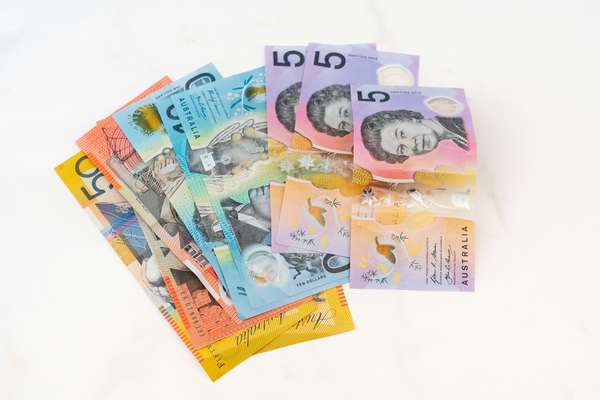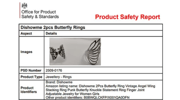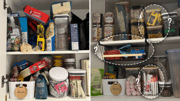
Scammers have been targeting Australian seniors more than any other age group, with those over 65 losing $120 million to fraudsters in 2023—a 13% increase from the previous year.
Now there's another threat to be aware of: counterfeit banknotes making their way into circulation.
ACT Police have recorded more than 80 counterfeit cash incidents in Canberra since December 2024, with the most recent occurring just last week. While this might seem like a distant concern, understanding how to spot fake money is crucial, whether you're a business owner, regular shopper, or someone selling items online.
The good news? Australia has one of the lowest counterfeiting rates in the world, and it's approaching its lowest level in a decade.
The polymer banknotes, a uniquely Australian invention from 1988, are designed to be extremely difficult to forge.
Older Australians are disproportionately targeted by scammers who view them as more vulnerable to sophisticated fraud schemes. Counterfeit money scams fit this pattern perfectly.
The Canberra incidents show a telling pattern: offenders target businesses using larger denominations of $50 or $100 notes, typically buying small items to receive legitimate change.
One retail worker, Sophie Jukes, described how a customer tried to pay with a fake $100 note that had a 'very plastic-y feel' and obvious visual errors, including the word 'copy' printed on it.
Even Crown Casino in Melbourne has reported a significant increase in counterfeit note detection, showing this isn't just a Canberra problem.
'Australia has one of the lowest counterfeiting rates in the world'
The people behind these scams are often targeting young, inexperienced workers who may be less likely to recognise fake currency.
ACT Police report that counterfeit currency is also being used on Facebook Marketplace to scam private sellers—a platform many seniors use to sell household items.
Some of the fake notes bearing 'copy' or 'prop' markings were originally produced for film or television use, but have made their way into criminal hands.
Australia pioneered modern polymer banknote technology, developed jointly by the Reserve Bank of Australia, CSIRO, and the University of Melbourne, with the first polymer note issued in 1988 for our bicentennial year.
The results speak for themselves: in 2021, only around 17,000 counterfeit notes were detected with a total value of just over $1.3 million—tiny compared to the 2 billion genuine notes worth $102 billion in circulation. The current counterfeiting rate is 9 parts per million, down from 27 ppm in 2015.
Quick counterfeit checks for any Australian banknote
Feel test: Genuine notes are made of polymer plastic and bounce back when scrunched
Window check: Look for clear windows that are part of the note, not added on
Light test: Hold up to light to see the seven-pointed star and Australian Coat of Arms
Texture test: Run your finger over portraits—you should feel raised printing
UV test: Serial numbers glow under ultraviolet light
Australian banknotes come in two series—the older polymer series (still in circulation) and the newer Next Generation Banknotes introduced between 2016-2020. Here's how to check both:
For older polymer banknotes:
When held to light, look for the Australian Coat of Arms visible as a 'shadow image' created by variations in the background printing. Diamond-shaped patterns on each side should line up perfectly to form a seven-pointed star inside a circle.
The clear window should have a white image that cannot be rubbed off. Under UV light, serial numbers and the note's value should be visible.
For newer banknotes:
Look for a clear top-to-bottom window with multiple security features that should be integral to the note, not additions. When tilted, genuine notes show a rolling colour effect visible on both sides.
Each denomination has specific features: $100 notes show a three-dimensional fan image, while $50 notes display a book.
[p]Universal features for all Australian notes:[/p]
Polymer substrate means genuine notes return to shape after being scrunched. Most counterfeits are printed on paper and tear easily, while it's difficult to start a tear along the edge of a genuine note.
Intaglio printing creates raised text you can feel when running your finger across portraits and major design elements.
If you own or work in a business, remember you're within your rights to refuse any banknote you suspect is counterfeit, as long as it's safe to do so.
Train staff to compare suspected notes with known genuine banknotes. Consider investing in a UV light to check for fluorescent features.
The pattern in Canberra shows scammers often buy small, inexpensive items like drinks with large denomination notes to get legitimate change back. Be particularly vigilant with $50 and $100 notes during small transactions.
Essential counterfeit detection steps
Feel the note—polymer should bounce back when scrunched
Check the clear window is integral, not stuck on
Hold to light to see the seven-pointed star and Coat of Arms
Look for raised printing on portraits and text
Verify serial numbers glow under UV light
Compare with a known genuine note if in doubt
If you suspect you've received counterfeit money, handle it as little as possible and store it in an envelope. Note all relevant information about how you came to possess it.
Report suspected counterfeits to local or federal police. Remember, counterfeit notes have no value and you won't be reimbursed for them.
If photographing the note for police, ensure you include the serial number in the image.
Did you know?
Australia was the first country to completely switch from paper to polymer banknotes by 1996, and our polymer technology is now used by more than 45 countries worldwide. The innovation has saved Australia more than $20 million annually compared to paper currency costs.
Over 6,000 Australians reported losing $58.3 million to social media scams in the first 10 months of 2024. Counterfeit currency is increasingly being used in these online marketplace transactions.
When selling items online, always research potential buyers, meet in person where possible, and never hand over items until you've verified payment. Use secure payment methods that offer protection, and if a price seems too good to be true, ask for multiple photos or proof of authenticity.
Read more: Fake meds are getting past Aussie borders—here’s how to spot them
-
Counterfeit cash is circulating. Here's how to spot a fake note
Genuine Australian bank notes have security features like hidden images and fluorescent ink, and return to shape after being scrunched. www.abc.net.au
www.abc.net.au
-

-

Common Scams That Target The Elderly - Australian Carers Guide
Scammers target people of all ages and backgrounds, however, some scams are more likely to target older people.australiancarersguide.com.au
-

Counterfeit currency circulating Canberra
ACT Policing is alerting Canberra businesses and members of the public following instances of counterfeit currency being passed to local businesses and private sellers.police.act.gov.au
-

Recent Trends in Banknote Counterfeiting | Bulletin – June 2022
Counterfeiting of Australian banknotes is approaching its lowest level in a decade.www.rba.gov.au
-

Top 5 Scams Targeting Seniors
Financial #scams targeting seniors often go unreported or can be difficult to prosecute. Find out how you can stop scams targeting #OlderAdults. www.ncoa.org
www.ncoa.org
-
Scams are affecting senior Australians more than any other age group | CHOICE
In recent years, many Australians aged over 65 have lost millions to scams. We offer straightforward tips and advice to help you and your loved ones keep ahead of this growing problem. www.choice.com.au
www.choice.com.au
Original article: Counterfeit money circulating in Canberra
Australian Bureau of Statistics – Persons aged 55+
Australian Carers Guide – Common scams that target the elderly
ACT Policing – Counterfeit currency circulating Canberra
Reserve Bank of Australia – Recent Trends in Banknote Counterfeiting
National Council on Aging – Top 5 financial scams targeting seniors
CHOICE – Scams affecting senior Australians
Have you ever encountered a suspicious banknote, or do you have questions about keeping your money safe? Share your experiences and tips in the comments - your insights could help protect other members of our community!







